#seforim
Explore tagged Tumblr posts
Text
14 Sivan 5784 (19-20 June 2024)
The 14th of Sivan 5270 saw a celebration among Ashkenazi Jews over the reversal of a decree nearly as horrible as the decree proposed to Ahaverosch by Haman in the Book of Esther, for though this was not a decree for the destruction of Jewish lives, it struck at something almost as dear to our hearts— the sacred books of Judaism.
Ashkenazi Jews had endured a precarious existence from the first settlements of Jews in the newly Christianized lands of Central Europe. By 5269, Ashkenazi communities had experienced centuries of violence inspired by the crusades and other forms of religious persecution. Maximilian I, who claimed the title of Holy Roman Emperor, had expanded his own treasuries for much of his reign by permitting cities to pay him for the right to expel their Jewish populations, then allowing those Jews to resettle in other territories under his control. Unlike his contemporaries in the Iberian Peninsula his aim was not to force Jews to convert but simply to capitalize on antisemitism for his own enrichment. In 5269, however, he was provoked to issue a decree calling for the seizure and destruction of Jewish religious texts including the Talmud and siddurim by a Jewish apostate and antisemitic agitator who claimed these books attacked Christianity and ought to be destroyed by the Christian ruler. Maximilian’s decree was immediately met with outrage not only by the Jews of the empire but by scholars, nobles, and priests who understood their importance, including the Catholic archbishop of Mainz. Eventually the pleas of these advocates and impassioned defenses of the Talmud by Christian Hebraists including Johannes Reuchlin persuaded the emperor to reverse his decree on the 14th of Sivan, and books which had been confiscated were returned to their Jewish owners. While Jewish life in Christian lands remained precarious, one disaster had been averted.
#jewish holidays#jewish calendar#hebrew calendar#jewish#judaism#jumblr#ashkenazi history#diaspora history#ashkenazi diaspora#cw antisemitism#cw christianity#talmud#siddurim#seforim#Sivan#14 Sivan#🌕
19 notes
·
View notes
Text
Since my previous post didn't turn up anything comprehensive like I was hoping for, I'm just going to do an informal writeup of advice on how to approach traditional Jewish observance with limited funds. I am not a rabbi or formal educator or anything official, nor is this in any way exhaustive. This is just based on my experiences as a 30ish year old adult who converted Conservative with no prior familial connections to Judaism and did so on a limited budget. I strive for traditional observance and would describe my practice as leaning more traditional egalitarian or Conservadox rather than what is most common for typical Conservative Jews in the US.
Okay? Okay.
Taking up traditional observance on a limited budget
So you're looking into traditional Jewish observance for the first time, either as a reclaimant, baal teshuva, or convert. One of the the first things you probably realized is that this lifestyle - especially the initial startup costs - is expensive. If, like me, you started reeling from the sticker shock but don't want to let that dissuade you out of stubbornness, commitment to Torah, or both, you're probably wondering where to go from here. Here is a list of things that you will need or want for an observant lifestyle that could cost money (some of this may be different based on your community and/or gender):
Ritual use (and practical use) items:
Mezuzot with a kosher klaf inside for each halachic doorway
Shabbat candles and candlesticks
Kiddush cup
Havdalah set
Challah cover
Tzedekah box
Tallit
Tefillin
Handwashing cup (and basin)
Tzniut clothing (this may be incredibly community specific) that is also practical
Tallit katan
A legitimate and covering rain coat
Walking shoes that you're not embarrassed to wear at shul (no really)
Kippot (and any other relevant head coverings, depending on your community)
**Replacing any kitchen utensils, appliances, and dishes that cannot be kashered if you're starting from scratch in keeping kosher, possibly ×2 or even ×3 depending on whether you intend to have a dual kitchen (or a meat, dairy, and pareve set of kitchen items)
Sukkah/building materials and decorations
Lulav & Etrog (these are plants; they are for ritual use but you will need to buy them each year obviously)
Menorah & Chanukah candles
Pesach dishes and kitchen utensils (noted separately because not everything is likely to be able to be kashered over for Pesach from year round) and any additional cleaning and covering items (so much tin foil lol)
Seforim (religious books)
Siddur
Bentcher(s)
Chumash
Tanakh
Practical halacha/practice guides and other basic reference books
Ongoing expenses:
Tzedekah (including special holiday giving such as mishloach manot and extra tzedekah for Purim or maot chitim for Pesach)
Shul membership fees
Kosher food is often more specialized and therefore more expensive, especially Pesach food
Wine or grape juice for Shabbat
Extra food if you're hosting people for Shabbat or potentially to bring to your host's home if you are invited over frequently
Specialized food for holidays (e.g., special fruit on Rosh Hashana, blintzes on Shavuot, brisket or matzah ball soup on Pesach, etc.)
Mikvah costs if you are married, menstruate (or have a spouse who does) and are shomer taharat mishpachat and/or if your community has a tradition of men using the mikvah before, e.g. Shabbat and holidays. Even if you don't need the mikvah for personal reasons, you will still need to pay a fee to immerse for conversion (if relevant) and to toivel any new kitchen items. You will also need bedika cloths for taharat mishpachat.
Housing in an area that allows you to walk to your shul, ideally within an eruv
Day school/Hebrew school if you have kids, and summer camp during the summers
Fees for certain classes and events; especially if you are a convert, you will likely need to pay for an Intro to Judaism course through your shul or at another local shul.
Other things that are extremely helpful, make observant life much easier and more pleasant, may help you fit into your community better, and/or enable more advanced participation, or are just nice to have:
Timers for electronics on Shabbat and Yom Tovim
Light switch covers for Shabbat
Hot water carafe for Shabbat/Yom Tovim
Plata or other type of warmer for Shabbat lunch and/or seudah shlishit
Specific laundry dealibobs (idk what they're actually called) for keeping your tzitzit in good condition
Shabbosdik watch
Shabbos key (especially if you live outside the eruv, but it's good to have for if the eruv goes down anyways)
Light box and/or thrip cloth for bug-checking produce
Bedikat chametz set
Purim costumes
If, like me, you owned exactly zero white clothes before now, you may want to invest in a white outfit for Yom Kippur &/or a kittel
Shofar (if you plan on contributing to your shul that way)
Etrog container and lulav transport bag
Machzor
Haggadot
Aramaic dictionaries for Talmud study
(Depending on the community) some amount of the Talmud
Commentaries
Tikkun
Talpiot
An extra bookshelf for all your Jewish books (not a joke)
Hebrew language classes and learning materials (which are extremely helpful in getting you integrated and up to speed)
This list doesn't even touch on things you might just want, like attractive judaica (hiddur mitzvah), jewelry, Jewish art and decor, etc.
(I also didn't touch on things that are part of major simchas such as bnei mitzvot or weddings, or travel to Israel, or studying in seminary, or other significant but highly specific expenditures that are unfortunately outside the scope of this one layperson's tumblr post)
Oy, that's a lot! This list (with a few exceptions) was generated by me going through everything I've had to invest in over time and ongoing expenses (or that I've had to find a workaround for), or things that are on my list for later when I have the funds.
I'm sure there's plenty I forgot. Where to even start?
Well, the first thing to note is that what I have took seven and a half years (and counting) to obtain, so don't expect to compile this all at once, and don't worry that you'll have to have all that money/resources marshaled up front. It will take time, and that's okay!
The other good news is that while some of this is nice to have, there's a lot that is not immediately (or ever) necessary for most/all folks to personally own, even if it is common for observant folks to own them.
A reality: Sometimes you're going to feel poor, and there will likely be a lot of people in your community who just, won't get it. Sometimes those people are in leadership. Yes this sucks and is sometimes really painful.
A counterbalance to that reality: A lot of people and communities are extremely generous and kind, even if they don't quite get it. Tzedekah is a huge mitzvah, and it is an added bonus for a lot of folks if that tzedakah goes toward enabling another Jew to observe more mitzvot. Hosting is also a major mitzvah. By accepting other people's help and being a guest at their Shabbos table, you are actually doing them a favor by giving them an opportunity to give tzedakah and host. Drill that into your head now, and early; don't be ashamed to ask for and receive help.
Now that I've laid all that out, some general advice. I will follow up later with specifics for each item from the above lists to the best of my ability in a later post.
Skip the judaica store for anything you can get at a thrift store. Candlesticks? Goodwill. B'samim jar? Find a cute container and throw some spices in there. Kiddush cup? Get a cute cup or wine glass at Target.
Start small, and take on one mitzvah at a time. It can be frustrating to have to wait, but it will help you pace yourself in reshaping your lifestyle, which is actually a very good thing. Also, before you take up a particular new mitzvah, learn deeply about it first so that you understand what is actually required, and what is customary (minhag) or stringency (chumra). You may not need the specialty pre-approved [read: more expensive] version of the thing if you know enough of what you're doing.
See if your shul, another nearby shul, or JCC ever has a community rummage sale. If so, check that out for secondhand menorahs, tallitot, siddurim, etc. (If not, consider suggesting that they do to leadership that organizes events or offer to organize it yourself if you're on that committee.) Also check out thrift stores and secondhand bookstores in particularly Jewish areas.
Talk to your rabbi about your needs. Your rabbi may have good suggestions that are specific to your area/community, may have discretionary funds to help, or may know folks who would be willing to pass on extra judaica they don't need.
Your shul may also have items you can borrow. I was able to, for example, borrow a machzor for the high holidays, and borrow a set of tefillin for nearly two years while I saved up for my own set. (And even then, the rabbi helped cover half of the cost from discretionary funds when I did purchase my own set, and was happy to do so.)
Honestly, just borrow whatever books you can until you can get your own. You can do this from your shul, your shul's library if they have one, or even the public library for reference books and certain commentaries. I would buy them in the following order: the siddur your shul uses, a chumash, a Tanakh, and then whatever else you're interested in. Sefaria.org is an incredible free online resource, but you'll want these for Shabbat and Yom Tovim sooner rather than later.
Talk to your rabbi or shul leadership about reduced membership fees, or join a shul that has a pay-what-you-can fee structure.
Look for classes that are free, have a sliding scale fee structure, or scholarships. If you're dead-set on a particular class and it doesn't advertise reduced fees or scholarships based on need, reach out to the organizers and ask. They might not have advertised it, but would be able to ask if someone would sponsor a student or give you ideas of other funds you could apply for.
Keep a wish list updated, and if friends or family are buying you birthday or holiday gifts, ask for important (and specific) items. I recommend an online registry so that you get the specific thing you need/want.
For specialty kosher food, see if your area has a kosher co-op so you can buy for bulk prices. (This is especially helpful for Pesach.)
These are general suggestions, but there's a lot more. Stay tuned!
341 notes
·
View notes
Text
I’m visiting my girlfriend’s family in the UK this week and I was hoping to come to a Shabbat morning service at the local synagogue, but their rabbi is in Israel so it’s on Zoom. We’re not staying long enough to attend the week after :c
To add to a streak of mild annoyances, we wanted to go to London so I could grab some seforim, but train tickets are more expensive than we thought (siding scale pricing etc.) so it might actually be more economically sound to just order online and bear the enormous shipping costs
#I really wanted to visit a different shul than my usual :c#and go to a bigger judaica store#jewish conversion#jewish convert#jumblr#jew by choice#jewish tumblr
3 notes
·
View notes
Text
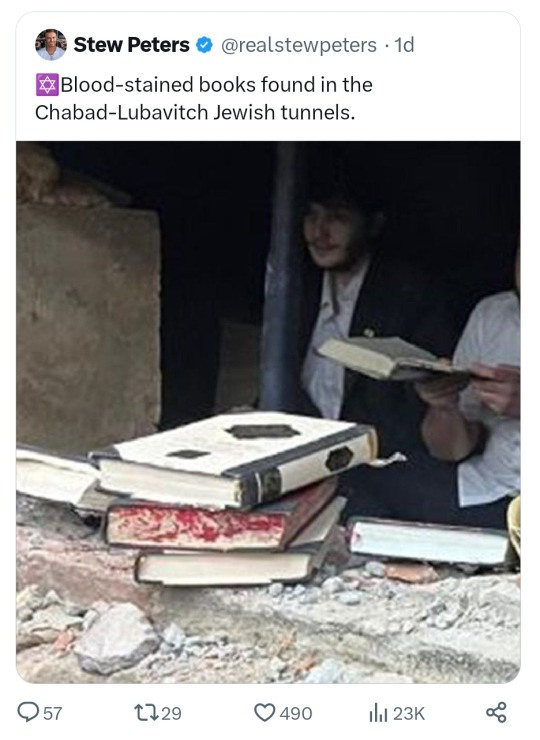
they don't even have marbled seforim 😔
2 notes
·
View notes
Text
as of right now I have scanned and catalogued 440 books from my and @ameliarating's home library. there are 2 nonfiction shelves and 3/4 of a shelf of graphic novels to go, this not including the handbound books, zines, art books from conventions, and many, many seforim, none of which have barcodes or ISBNs.
don't look at the time stamp for the first post. nobody needs to know that information.
saturday at shul I was talking with a guy who introduced me to an app that one can use to build a record of your personal library by scanning isbns. someone should've stopped him but they didn't so here i am going ooooh a project that could easily suck me in and consume me for hours where i can't stop until i'm completely finished
better put some guardrails on that one I guess
#so uh. how about them guardrails#i'm fine! i'm fine. everything is fine#important text posts#this is my real life#now that i've pried myself away from that project time to eat dinner#also for people who are like 'how the hell do you have that many books lise'#this is what comes of a combination of 1. working in the book publishing industry & adjacent for just over 7 years#and 2. my wife keeps getting things for her library from other retiring rabbis/books for school#so that's how that happens. that and not reading fast enough and checking out 12 books at a time from the library
88 notes
·
View notes
Text
Anyways anyone who says “✨there’s no religion in star trek!!!✨” when season 2 episode 25 ‘Bread and Circuses’ exists and is canon owes me 5 bucks and a kosher pizza
#i take damage every time i get to the end of that episode#uuuugh#anyways religion is cool and important and i WILL be taking my seforim to mars with me#try and stop me#me and my leichter will be keeping shabbos on risa thank you#theReS NO reliGION In StAr TreK#shut up gene
13 notes
·
View notes
Text
also also also (i should really go to bed)
idk if people remember me talking about the genesis programme but essentially i have a pretty significant amount of money (£225, which is about $290 or 1,060 shekels) from aish for use on any Jewish books that they consider Orthodox
so i’m set, i think. baruch Hashem!
gonna get myself some machzorim (Koren), a nice haggadah, maybe a new Tana”ch (haven’t decided where to get the second two)
man, Jewish shopping is so exciting.
oh yeah i was posting to ask if anyone had any recs for those books or any other Jewish books? like if there’s any book you love (or even respect or like or find interesting, something that changed you maybe) if you’re wondering which Tana”ch or Haggadah to recommend, i like integrated high-level commentary and my old Tana”ch was JPS. it’s still, like, together and usable and everything, it just has no commentary, which I really dislike (i’m told the translation is amazing, but that doesn’t really affect my experience much)
#aish#(thank you for this money Aish and also God)#lehavdil#judaism#sefer#sefarim#seforim#ayekah#genesis
11 notes
·
View notes
Photo
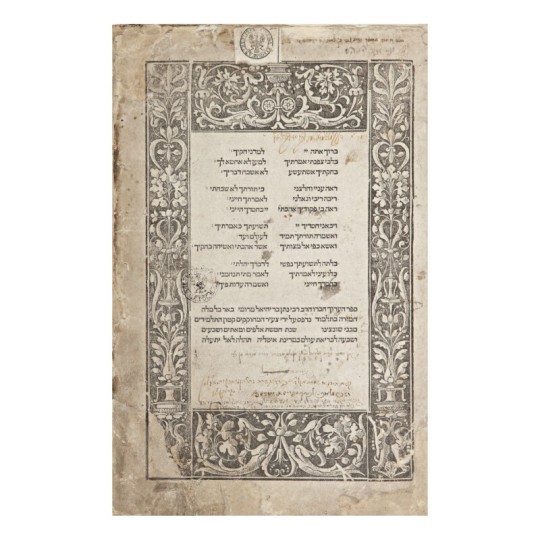
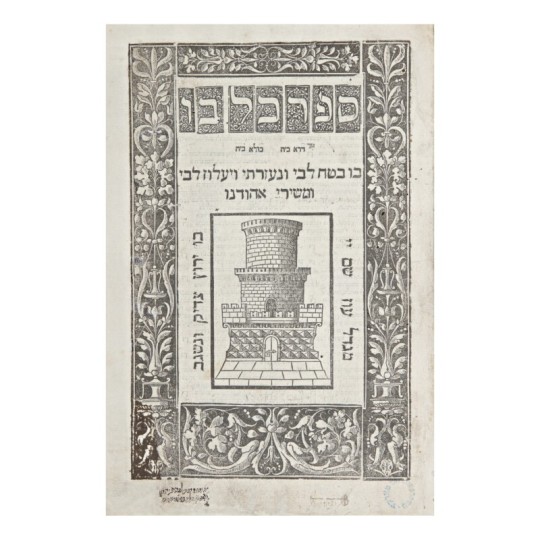

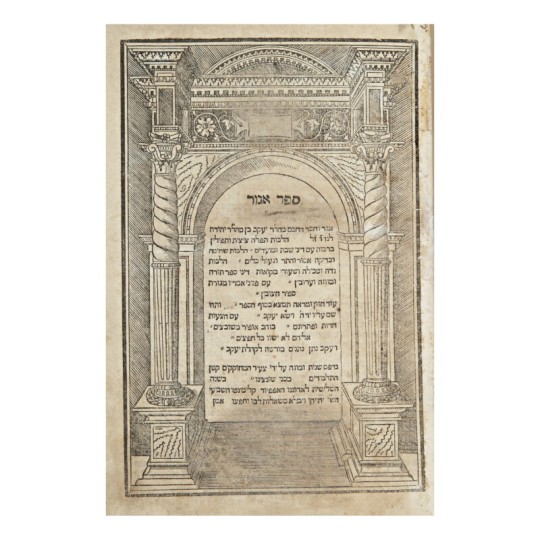
Four seforim from the press of Gershom Soncino
Sefer he-arukh (Talmudic dictionary), Rabbi Nathan ben Jehiel, Pesaro, 1517
Rabbi Nathan ben Jehiel (1035-ca. 1110), cohead (together with his two brothers) of the yeshiva in Rome, was a widely-respected Italian halakhic authority and an accomplished linguist. In the present work, completed in 1101, he explicates, in alphabetical order, the many difficult terms in the Babylonian and Jerusalem Talmuds, as well as in targumic and midrashic literature, often providing the pertinent etymology from Latin, Greek, Arabic, or Persian; in about six hundred cases, he glosses the term with its Judeo-Italian equivalent. R. Nathan’s detailed explanations contain material of historical and bibliographical value, including descriptions of rare Jewish customs and citations of otherwise-unknown passages from important works.
Sefer kol bo (Halakhic compendium), Rimini, [ca.1520]
Written at the end of the thirteenth or beginning of the fourteenth century, Sefer kol bo contains one hundred forty-eight chapters dealing with blessings, prayer, the synagogue, Sabbaths, festivals, marriage, monetary matters, forbidden foods, and mourning; it also includes one of the earliest commentaries on the text of the Passover Haggadah. The identity of the author remains unknown, though scholars have long discerned a close relationship between this work and the Sefer orhot hayyim of Rabbi Aaron ben Jacob ha-Kohen of Lunel. Identical language in the two books caused Rabbi Joseph Caro (1488-1575) to suggest that Sefer kol bo is an abridged version of the latter tract. Some, however, have proposed the opposite: that Sefer kol bo is really an earlier draft of the more expansive and more fully-developed Sefer orhot hayyim.
Sefer ikkarim (Book of Principles), Rabbi Joseph Albo, Rimini, 1522
Rabbi Joseph Albo flourished in Spain between 1413, when he participated in the Disputation of Tortosa, and 1433. The authorial colophon of his Sefer ha-ikkarim, a fundamental treatise of Jewish theology and philosophy, records its completion at Soria in 1425. The work is divided into four parts: an introduction to the author’s dogmatic system, followed by his exposition of each of three ikkarim (fundamental principles of Jewish faith) – the existence of God, divine revelation, and reward and punishment – as well as their shorashim (derivative principles) and anafim (obligatory dogmas). A long section of part three of the book was taken to be anti-Christian, and the papal censors removed the offending leaves from a large proportion of the surviving exemplars. This is specifically alluded to in the Book of Expurgation compiled by Domenico Irosolomitano, of which several manuscript copies are known. Domenico wrote of the twenty-fifth chapter of part three that it was proper to censor the entire chapter “or, better still, to tear it out of the book.”
Sefer agur (Ashkenazic halakhic compendium, Rabbi Jacob Landau, [Rimini], [1525-1526]
Sefer agur is a concise halakhic compendium by Rabbi Jacob Landau, scion of a prominent German rabbinic family who resettled in Naples in 1487. There he worked for a time as a proofreader at the press of Joseph Gunzenhauser, whose son Azriel printed the first edition of Landau’s Sefer agur circa 1490. The work relies primarily on the Sefer arba‘ah turim of Rabbi Jacob ben Asher and follows the arrangement of that work. Prominent mention is made, however, of rulings by later Ashkenazic authorities, among them Rabbis Israel Isserlein, Jacob Weil, Joseph Colon, and the author’s father, Judah Landau.
#jumblr#judaism#printed books#gershom soncino#italy#rabbi jacob landau#rabbi joseph albo#rabbi nathan ben jehiel#myposts
19 notes
·
View notes
Text
2 Elul 5784 (4-5 September 2024)
The invention of the moveable type printing press in the fifty third century of the Hebrew calendar set off far reaching transformations in numerous human endeavors, with the study of halakha being no exception. Prior to mechanical printing, each copy of any book had to be laboriously and meticulously copied by hand, with the result being that most people simply did not own books. For many centuries after the Talmud was first put into writing rather than being transmitted entirely as an oral tradition through repetition and memorization, most Jewish study was still performed collectively, with hand-copied seforim being discussed and commented on collectively in batei midrash. Hand-made copies had to be very carefully checked to ensure a text remained the same through multiple copyings and variants were still often introduced. And most Jews would not have owned any books personally, with the exception of especially erudite scholars. The printing press made mass production, and thus mass ownership of books, possible. The result was not just more books, but different kinds of books. Most halakhic seforim prior to the invention of printing assumed a high level of expertise from their readers— they were written not for the average Jew but for scholars engaged in the multigenerational process of halakhic rulings, and assumed a high level of familiarity with the entirety of the Tanakh and Talmud and participation in the pandiasporic community of Torah scholarship and halakhic analysis. Those who weren’t already experts in these subjects were assumed to have teachers and colleagues who would guide them as they interacted with halakhic texts. Rather than reading commentaries directly, Jews who weren’t engaged in the lifelong pursuit of Torah learning were expected to consult somebody with that expertise on any practical matter in which they needed guidance.
The printing press, by giving non-experts access to private book ownership, created demand for introductory texts for a general audience without a thorough background in thousands of years of halakhic debate. One of the most legendary texts to meet this demand was the Shulkhan Arukh, a halakhic compendium by Yosef Karo, which was first printed on the second of Elul 5325.
Karo was born into a Sephardi family in Toledo four years prior to the edict of expulsion issued by Ferdinand and Isabella. His family journeyed through a full range of the potential refuges found by Sephardi emigrants, spending five years in Portugal before that monarchy followed suit in expelling Jewish subjects, followed by years in Morocco, Nikopolis, Adrianopolis, Thessaloniki, Istanbul, and finally Tzfat in the Galilee. These travels introduced Karo to a wide range of Torah scholars and communal minhagim, and he began to harbor hopes of creating a halakhic code which would serve to unify Jewish practices throughout the diaspora. Karo’s main text, Beit Yosef, sought not only to state halakhic conclusions in an encyclopedic manner but to provide detailed examinations of the generations of debates behind those conclusions. The Shulkhan Arukh was a reference text which presented only the halakhic conclusions, without the details of the logic by which those conclusions were reached. While the book’s author and a majority of rabbinical sages of the time considered it insufficient for drawing conclusions about halakha due to its simplicity and far from traditional univocality, the book proved hugely popular with the Jewish masses, who wanted a reference text they could keep at home which would offer answers to daily practical questions. It was precisely what Karo and his contemporaries saw as the book’s oversimplification of a gloriously rich and varied tradition that made it approachable and beloved.
Karo himself realized during the process of composing his magnum opus, Beit Yosef, that his youthful hopes for bringing about global uniformity in halakhic practice were misguided. In his later years he spoke out against attempts to use his works to pressure communities with distinct minhagim or who chose to hold by other poskim to adopt his conclusions, emphasizing that Judaism was the process of engaging with halakhic reasoning and debate and should be defined by variety, not an insistence on adherence to any one set of halakhic rulings. And in fact his landmark code, which harmonized generations of Sephardi tradition, was soon joined by a commentary by one of Karo’s contemporaries, Moshe Isserles, which delineated the distinct Ashkenazi minhagim which differed from Karo. This text came to be known as the Mappah, or tablecloth, to the Shulkhan Arukh, or set table, and has been printed as an integrated part of the text beginning twelve years after its first printing. Other integrated commentaries followed as well, injecting the multivocality of Jewish tradition back into Karo’s simplified halakhic compendium. To this day, the Shulkhan Arukh remains the most influential and widely consulted single halakhic code ever compiled.
#jewish calendar#hebrew calendar#judaism#jewish#jumblr#seforim#halakha#Shulkhan Arukh#Shulchan Aruch#Yosef Karo#joseph caro#sephardi history#sephardi diaspora#diaspora judaism#jewish history#halakhot#People of the book(s)#Elul#2 Elul#🌙
15 notes
·
View notes
Text
🤩 free seforim 🤩 free seforim 🤩 free seforim 🤩
10 notes
·
View notes
Text
I also ordered a copy of The Complete Maus (not available as part of the Seforim Sale, unfortunately)
8 notes
·
View notes
Text
Mussar needs to be learned over and over and over for that to happen.
The mesilas yeshorim opens his Sefer by saying that he is not writing anything people do not know already. But merely reminding people of that which they do know.
Just knowing Tochachah will not always mean action will follow.
Rav Yisroel Salanter ZTL used to have his Talmidim sit and chant one line of Mussar over and over like a mantra. The idea of Mussar is that is must penetrate you. Not merely be known by you.
Use Gedarim Siyagim, and focus on one idea at a time. And spend time on the idea until it sinks in.
Don’t worry that it doesn’t happen right away. It’s not meant to.
---
Use the Sefer Orchos Tzadikim. Follow his program and work Middah by Middah, according to the order of the Sefer.
An alternate idea is to do the same thing, but with the Mesilas Yeshorim.
The difference between the two Seforim, in this sense, is, Orchos Tzadikim focuses on improving the person one Middah at a time, whereas Mesilas Yeshorim focuses on improving the total person, little by little.
It's 12 of this or a dozen of that. Take whichever approach you think works better for you.
3 notes
·
View notes
Note
Do the torah really mentions the earths end when the messianic age comes
Yes (although this isn't my most learned area), acharit ha'yamim is mentioned in the Tanakh, specifically in seforim: Yeshayahu, Yirmiyahu, and Yechezkel. If anyone more knowledgeable in this area sees this, please elaborate!!
3 notes
·
View notes
Text





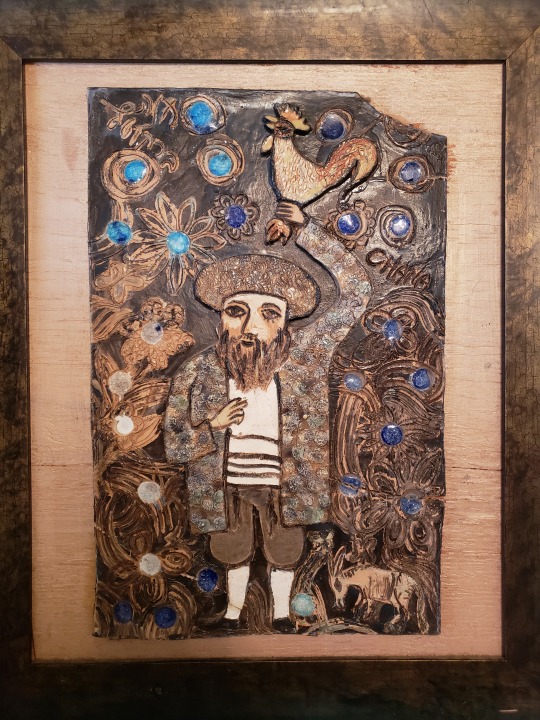

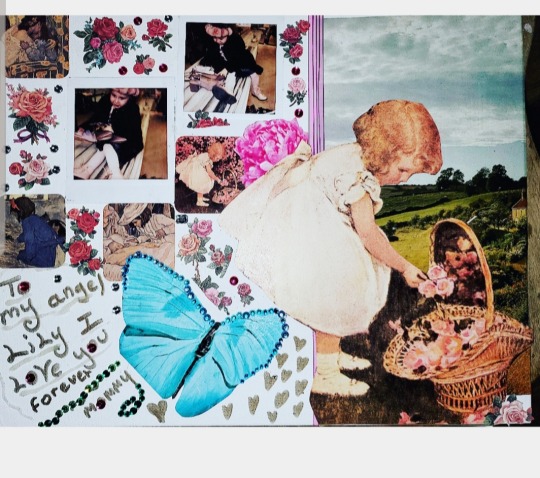
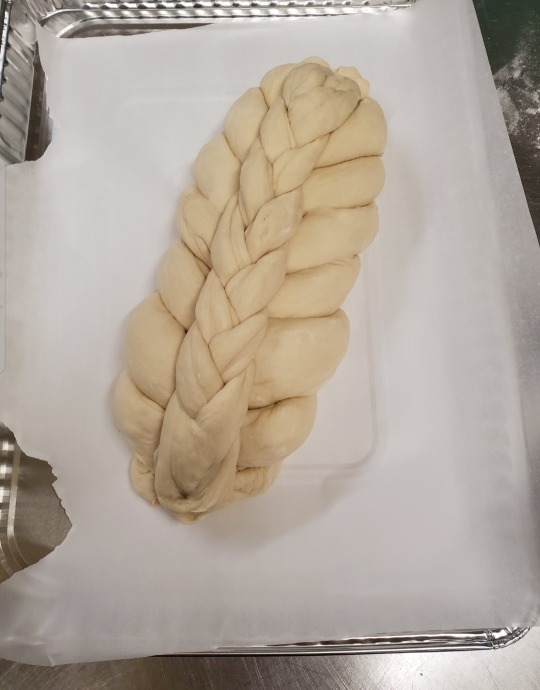

Home is Where the Heart Is: Mama of a Girl
I have had an identity complex for as long as I can remember. I grew up going to Bais Yaakov which I loved and those were some of the best years of my life by far, I grew up listening to Yosseleh Rosenblatt and Yiddish radio in my Zeidys seforim store amongst kiddush cups, talieisim and mezuzah parchment [I knew how to check one and roll one up into the mezuzah my Uncle taught me how] and a constant dialogue of yiddish banter between my bubby Rochel Leah [my two grandmothers were the other loves of my life besides my babies] and her husband my Zeideh Naftoli. And then I also learned about television and cartoons and movies and music from well everywhere and my uncle Chaim even gave me his zune [yes this was pre-ipod days] full of music and a boombox and a ton of CDs and so yes I had an identity complex.
When we moved into the apartment on Grand street in the Lower East Side I distinctly remember that it was the first time I ever put my "design skills" to use and I repainted my mothers old furniture and I designed a whole desk set with my mother we cut everything out of felt and supplies that I bought from an art supplies store all the way downtown and I felt so cool and very official because I had a color coordinates supremely girly room even with a bean bag chair that I had seen in a JC penny catalogue and saved up for with babysitting money. That room was home that apartment was home. And what did I remember made it feel the most like home? My mothers artwork lining the walls. Her ceramic portraits of Jewish life, her paintings of pasukim all over and so when I moved into m yh apartment as a young married woman the first thing I set out to do was cover my walls in art my collages which were what to me made the house a home.
And my bubby passed away and she really was a love of my life my kindred spirit and I walked through her apartment and there on her walls was her essence the art she chose so meticulously, everything representing something about her that was her heart those paintings, the heart is what makes a house a home. And so the inverse statement is true we can be home anywhere we are as long as our heart is there. And however we feel whether we feel a bit mixed up in life or a bit lost if we have our whole heart here with us taking care of our children we the mamas can make any house a home.
It's such scary times and I had a very scary thing happen Friday which made me realize how fragile and short life really is it is so short and it is so fleeting and so now all I can do to calm myself is sit and make art with Layla and Tuli because I know it's made with our heart and it's making our house a home and a great book to teach about feeling safe anywhere is "Home" by Carson Ellis. Little things like Challah, childrens books, art projects all these things seem so small but in the eyes of a child they can be everlasting memories that make a child feel safe and secure in these crazy times.
I'm tired as is every other mama on this earth at this moment and by some miracle both babies are basically asleep and I plan on continuing to decorate Layla and my room tonight because if there is only one thing I can do to make this life a little more settled for her in this crazy world is to make this house a home.
1 note
·
View note





